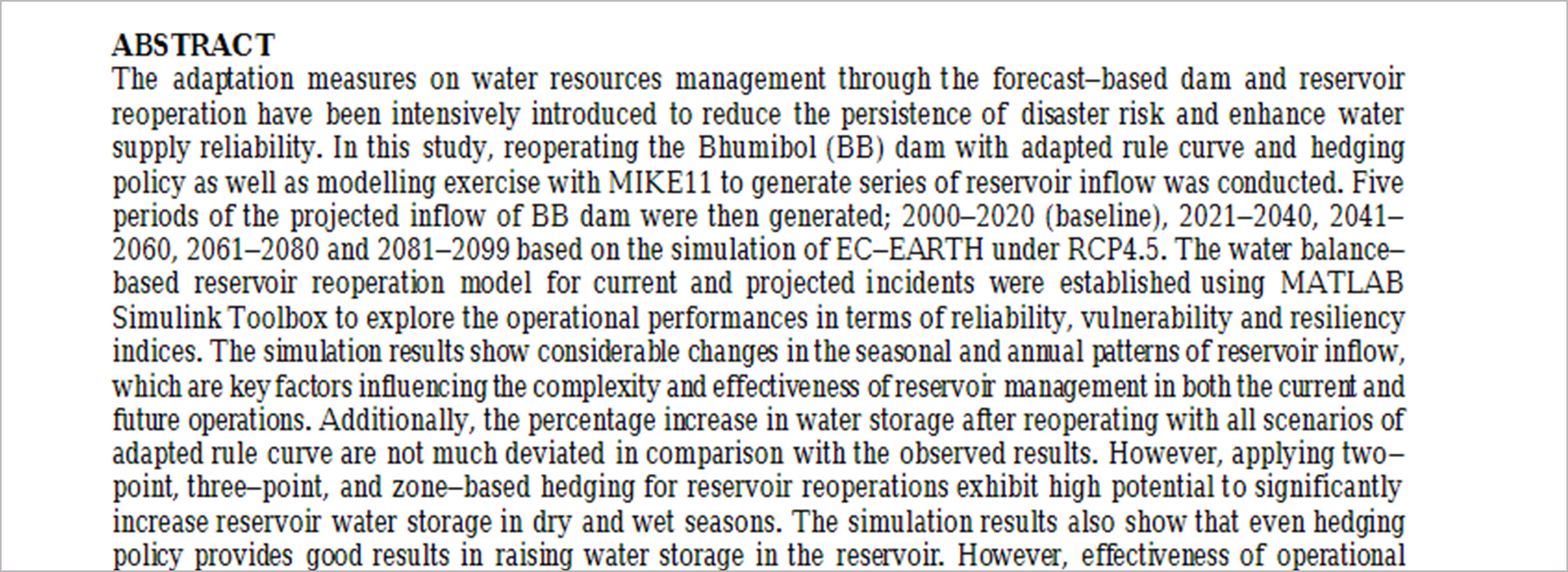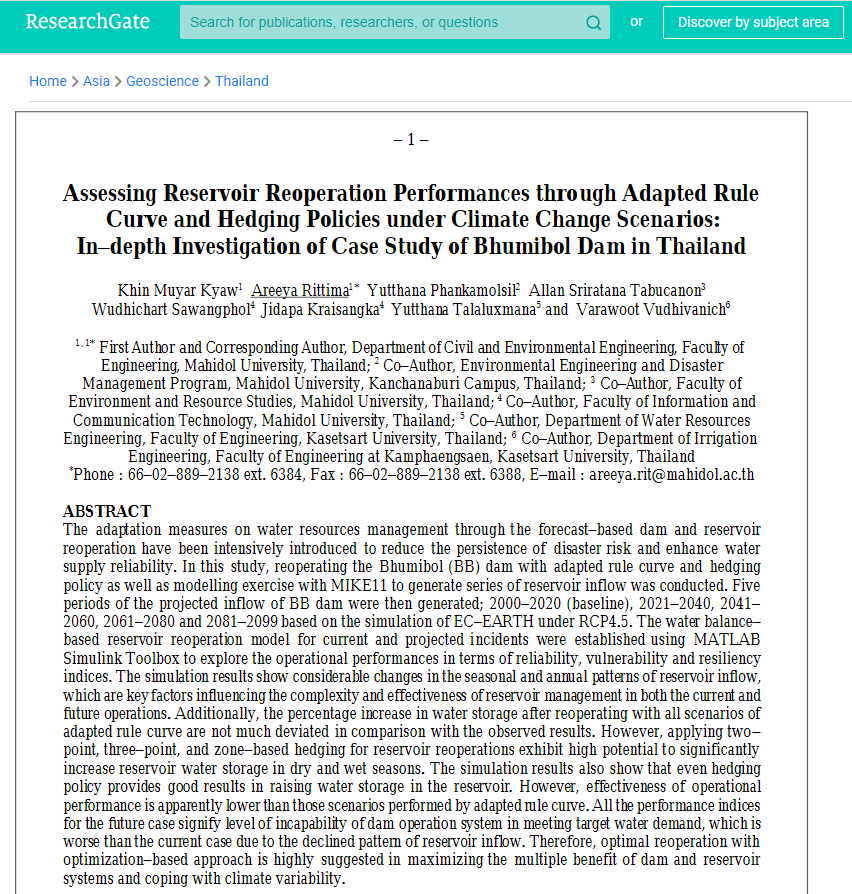Journal /Conference
The 10th International Conference on Environmental Engineering, Science and Management
Authors
Khin Muyar Kyaw (1), Areeya Rittima (1), Yutthana Phankamolsil (2), Allan Sriratana Tabucanon (3), Wudhichart Sawangphol (4), Jidapa Kraisangka (4), Yutthana Talaluxmana (5),
Affiliation
- Department of Civil and Environmental Engineering, Faculty of Engineering, Mahidol University, Thailand
- Environmental Engineering and Disaster Management Program, Mahidol University, Kanchanaburi Campus, Thailand
- Faculty of Environment and Resource Studies, Mahidol University, Thailand
- Faculty of Information and Communication Technology, Mahidol University, Thailand
- Department of Water Resources Engineering, Faculty of Engineering, Kasetsart University, Thailand
- Department of Irrigation Engineering, Faculty of Engineering at Kamphaengsaen, Kasetsart University, Thailand
Abstract
The adaptation measures on water resources management through the forecast–based dam and reservoir reoperation have been intensively introduced to reduce the persistence of disaster risk and enhance water supply reliability. In this study, reoperating the Bhumibol (BB) dam with adapted rule curve and hedging policy as well as modelling exercise with MIKE11 to generate series of reservoir inflow was conducted. Five periods of the projected inflow of BB dam were then generated; 2000–2020 (baseline), 2021–2040, 2041–2060, 2061–2080 and 2081–2099 based on the simulation of EC–EARTH under RCP4.5. The water balance–based reservoir reoperation model for current and projected incidents were established using MATLAB Simulink Toolbox to explore the operational performances in terms of reliability, vulnerability and resiliency indices. The simulation results show considerable changes in the seasonal and annual patterns of reservoir inflow, which are key factors influencing the complexity and effectiveness of reservoir management in both the current and future operations. Additionally, the percentage increase in water storage after reoperating with all scenarios of adapted rule curve are not much deviated in comparison with the observed results. However, applying two–point, three–point, and zone–based hedging for reservoir reoperations exhibit high potential to significantly increase reservoir water storage in dry and wet seasons. The simulation results also show that even hedging policy provides good results in raising water storage in the reservoir. However, effectiveness of operational performance is apparently lower than those scenarios performed by adapted rule curve. All the performance indices for the future case signify level of incapability of dam operation system in meeting target water demand, which is worse than the current case due to the declined pattern of reservoir inflow. Therefore, optimal reoperation with optimization–based approach is highly suggested in maximizing the multiple benefit of dam and reservoir systems and coping with climate variability.


